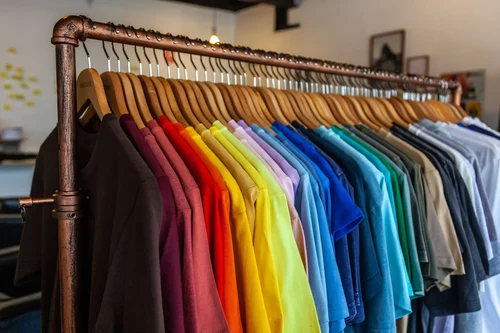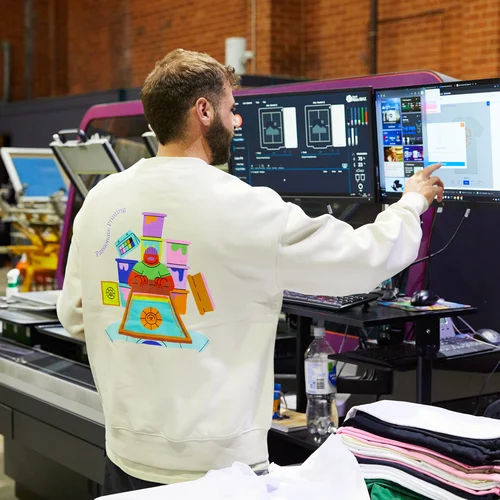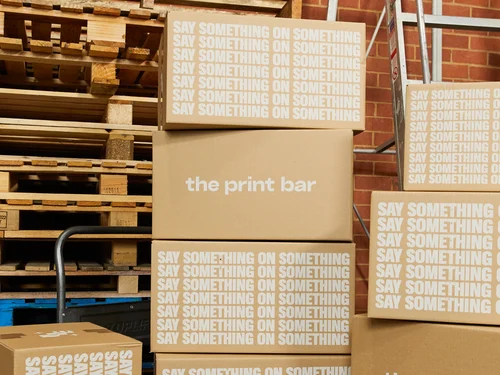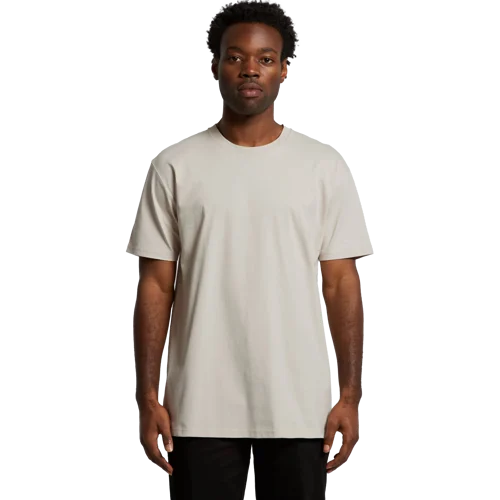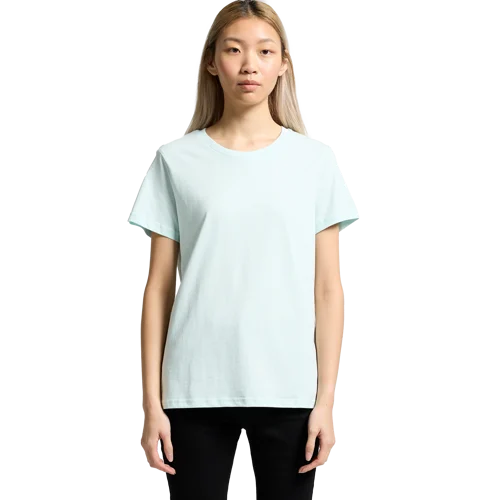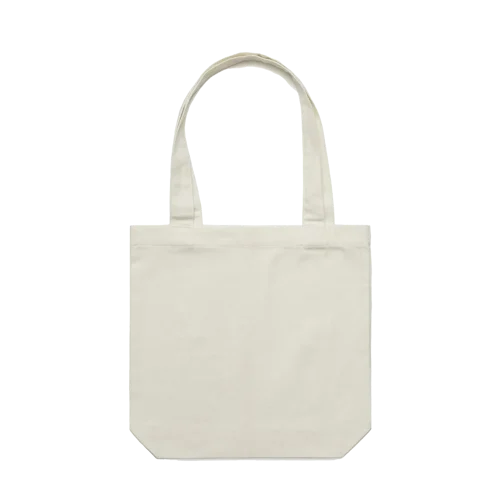Screen Printing on Tees, Hoodies, Totes | The Print Bar
Screen Printing
For bulk orders, vibrant block colours and designs that stand out, Screen Printing is for you. Custom merch with logos and simple designs on t-shirts, hoodies and totes are the perfect candidates for Screen Printing.
- Great for bold colours and crisp designs
- Ideal for designs with up to 6 colours
- Very cost-effective for bulk orders
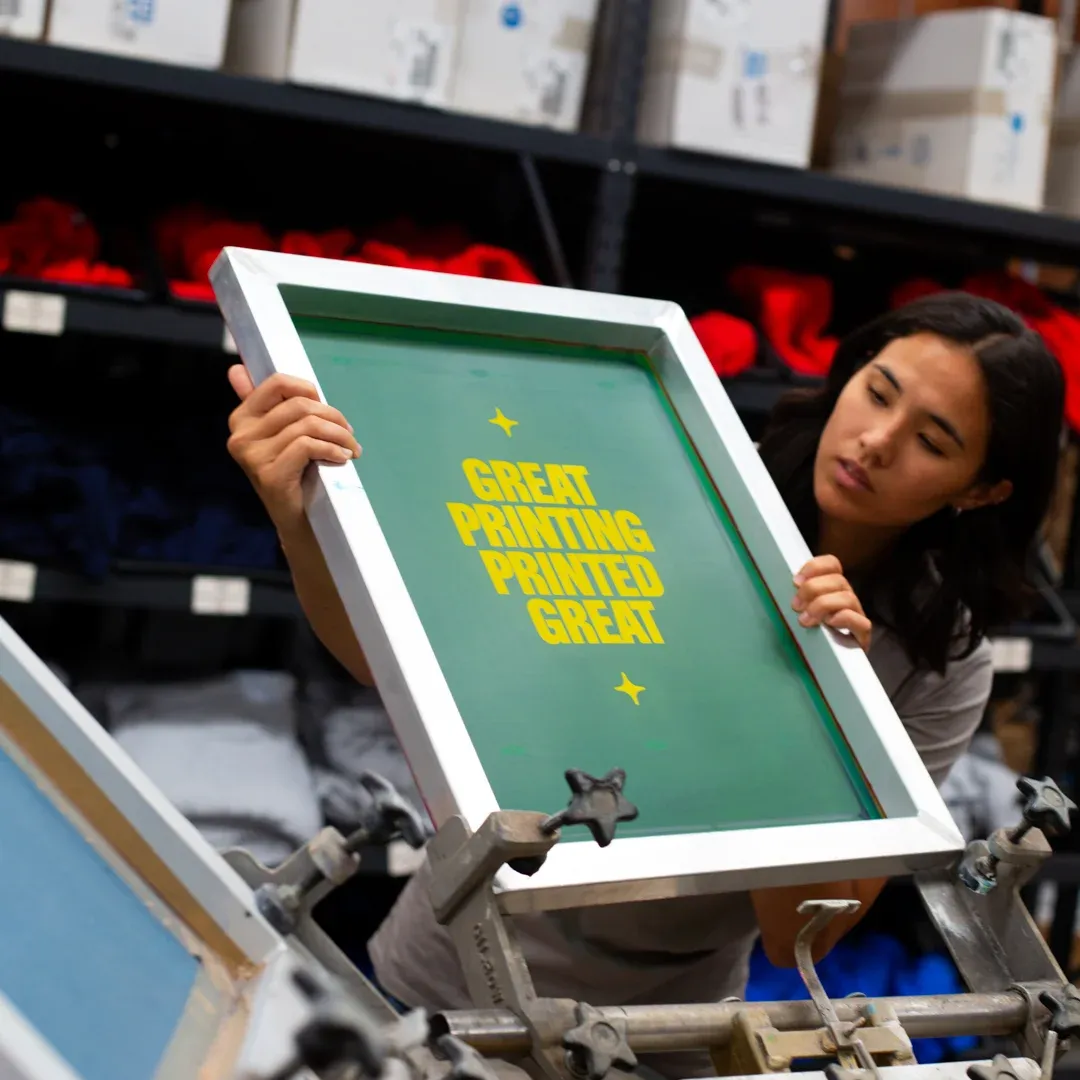
Screen Printing turnaround times
2 weeks is our turnaround for Screen Printing. It’s a bit longer compared to other methods as the screens need to be printed and set-up. We also have a more rigorous quality assurance process to ensure a close colour match with available inks.
Vivid custom screen prints in a few simple steps
Per Colour Pricing
For each colour, a screen needs to be created ($50) - this price is averaged over the cost of the garments, the paint cost is applied per design, per side of garment. Below is the colour cost for one design with:
Volume Discounts
For each colour, a screen needs to be created ($50) - this price is averaged over the cost of the garments, the paint cost is applied per design, per side of garment. Below is the colour cost for one design with:
Per Colour Pricing
$3.20
1 Colour
$4.14
2 Colours
$4.50
3 Colours
$5.04
4 Colours
$5.67
5 Colours
$6.39
6 Colours
Volume Discounts
$29.26
15
$19.43
50
$15.93
100
$13.80
250
$12.99
500
$12.14
1000
Screen Printing
There's a lot of reasons why we love screen printing!
Bulk Orders
Screen Printing is most cost effective for bulk orders as the set-up costs are averaged out over each product printed. So if you’re only looking for one custom tee, Screen Printing would be an expensive choice. Once the screens are set-up, bulk orders are made easy as it’s set up to pump out exact replicas.
Refined Colour Selection
As each colour is pushed through the screen into the garment separately, it does mean that fewer colours yields a faster and cheaper result. As each colour is a different ink, colour match may not be as exact when compared to Digital Printing, which is why we recommend Screen Printing for 6 or less colours.
Our garment recommendations
Screen Printing is perfect for your custom t-shirt, hoodies, totes, clothing and homewares. We always recommend screen printing when you’re wanting something printed in bulk or have a logo or design that’s simple and has few colours.
Colour Matching
Looking for the exact colour match for your logo? Or for custom glitter inks? Get in touch with us with your order number and details so we can get everything printed as you need it. Our design tool does a fantastic job matching colours, but always check if you need something specific.
Pricing
Prices vary greatly depending on the garment you're printing on, the number of print locations, and the colours involved. We’ve developed our pricing calculator, available on all garments, to give you the specific price based on your order. Remember with Screen Printing, you get the best value when you order in bulk.
Tips
Screen printing is really great for block colours and certain illustrative styles with bold shapes. To get the most from screen printing, we recommend that customers: Supply an image with ideally 8 colours or less. Vector (SVG) images are completely scalable and transfer to screen printing well, but our tool also uses JPEG, PNG and BMP. Great for bulk logo printing and uniforms
Quality & Feel
Screen prints provide bold, retail-quality colours, and the detail is super crisp. The print itself sits just on top of the garment (depending on the ink), and is mostly soft to touch.
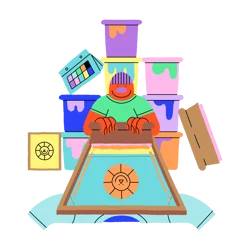
Our screen printing process
Traditional screen printing, or serigraphy, is essentially the process of applying ink through a stencil.
The 'screens' are a fine-mesh that’s stretched over a rectangular frame and coated in light-sensitive emulsion. The design is split into colours, with each colour printed onto transparent film and exposed onto a separate screen. Exposing the screen makes a stencil of the design, only allowing ink to pass through the exposed design.
A screen is then placed onto the print surface, and ink is pressed through the mesh, forming the print. This process is repeated for each additional colour, with the use of a high-temperature flash in-between. After the print is applied in each colour, the item is placed through a heat tunnel to cure and dry the ink onto the garment.
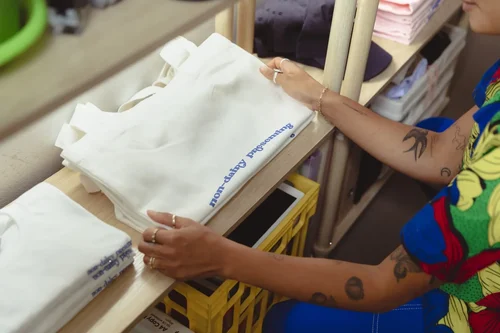
Print Durability
The prints will age well beyond the life of the garment as long as they're cared for and washed appropriately:
- Cold wash on delicate settings
- Wash garments inside-out
- Air-dry out of direct sunlight
- Do not iron over print (only iron on the reverse if you must)
- Do not tumble dry
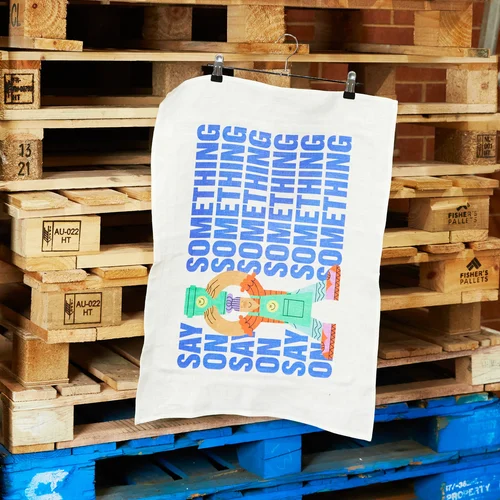
Choose something to start...
Hate Labels?
Love 'em or hate 'em, we make them work how you want them to. Whether you want your tags removed or new ones printed, we’ve got plenty of options to fit your needs.
Screen Printing
Is it bulk season? With Screen Printing, we can bring all of your bulking dreams true. With scale discounts and a huge range to choose from, this is perfect for quality merch made to last.
